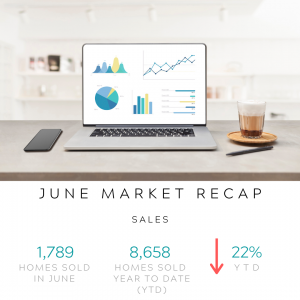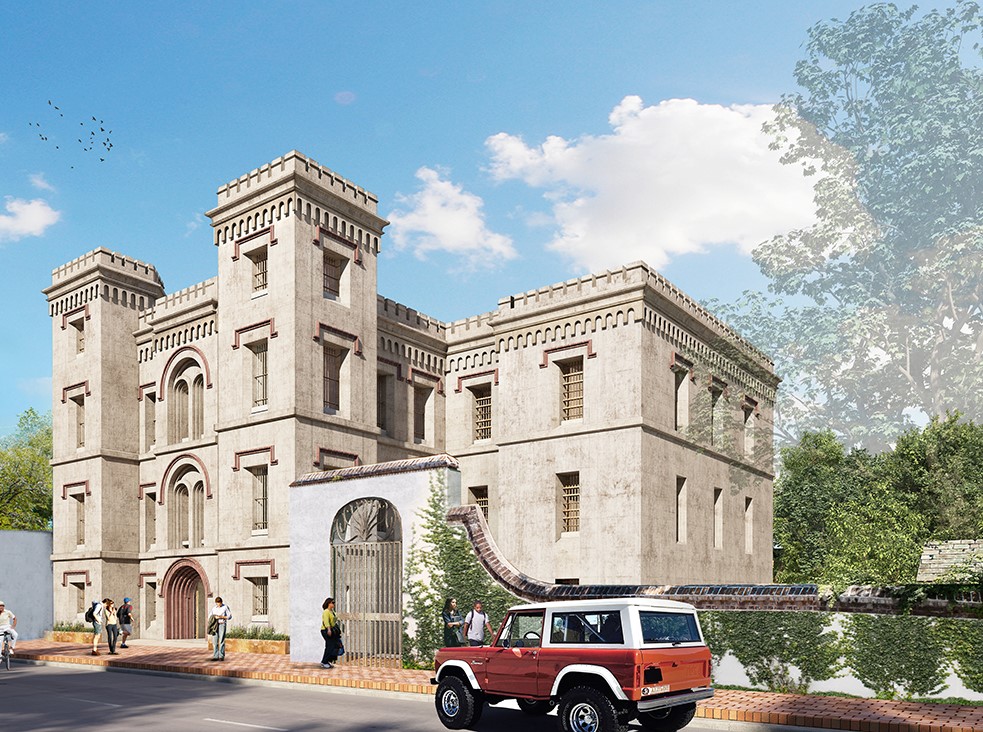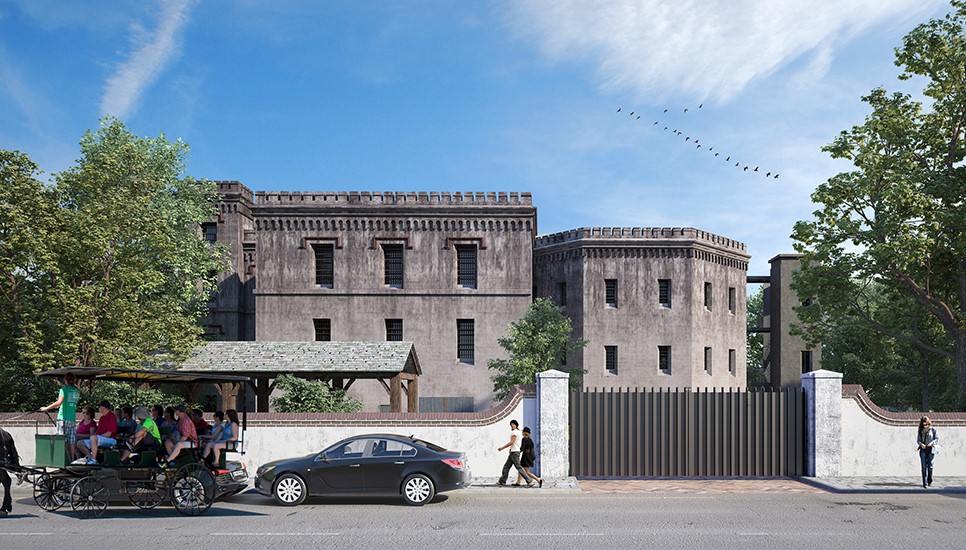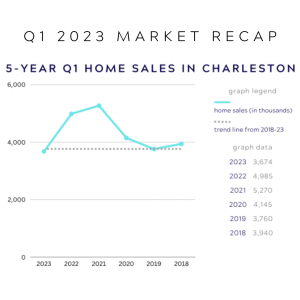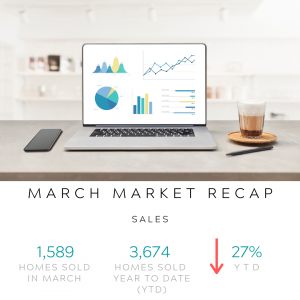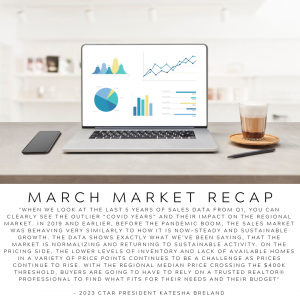CTAR is in support of the proposed plan for Union Pier. The overall housing ecosystem will benefit from the 1,600 units created. The CTAR evaluation highlights the difficulty in providing affordability on Union Pier. Yet, through dedicated funding and land banking, Union Pier can have a tremendous impact on the overall affordability for the City of Charleston.
Restrictions on Union Pier
Height and Density:
By limiting height and density, the city is taking away the opportunity to provide affordable options within the project. To address affordability within Union Pier, Charleston needs to allow for more height and density. At 5, 6, and 7 stories; true affordability cannot be obtained.
Union Pier needs to increase their proposed height and density to provide affordability on site.
Available Footprint:
Green space is important. However, when we lose footprint to parks and parking, yet density is not transferred throughout the project; affordability cannot be achieved. By creating more green space, Union Pier needs to transfer the density lost for parks to other areas of the site.
For the offset, Union Pier needs to increase their proposed height and density to provide affordability on site. Union Pier could offset this by reducing the parking requirements as well.
More Prescriptive, More Expensive
The more prescriptive in nature we are with our zoning and land use regulations, the less innovative the design. As has been outlined with Union Pier, a heavily prescriptive PUD creates less opportunity for innovation. These restrictions increase the complexity of the design as well as costs of the project. Union Pier has already confirmed this will fall under the Board of Architectural Review (BAR) for approval. Allow the BAR process to work without the unnecessary pressure of a prescriptive PUD.
A prescriptive PUD also limits the opportunity for many developers. By having a small market of available developers, there is less competition to keep bids low. A prescriptive PUD works against affordability in this instance.
Union Pier cannot have an overly prescriptive PUD to achieve affordability.
Infrastructure Needed
As has been outlined in previous sessions, the infrastructure for this project is unlike any development in our city’s history. The costs associated with Union Pier for only the infrastructure will be north of $250 million and likely much higher than that, based on rising construction costs in the market.
Union Pier needs to generate significant revenues to provide these infrastructure improvements to Charleston. Lower income housing cannot be obtained with the density restrictions in place.
For these reasons, Union Pier needs more height and density to provide affordable housing on site.
Development Timelines
The development approval process takes 36 months to complete under normal circumstances. The timeline is far too long to address affordability. The development community needs added density in order to address affordability under these conditions.
The complex nature of this project will lend a lengthier timeline. To overcome these barriers, Union Pier needs added height and density to offset the costs associated with the city’s development process.
Legal Obstacles
Developers now face growing pressure to have legal advocacy as part of their costs associated with development. In Charleston today, the traditional approval process is no longer sufficient for some development. Often times, it is necessary to remedy development approval decisions in the courts because of outside suits. Legal costs mount significant obstacles to addressing affordability.
Litigation also slows the transaction process. The 1% transfer fee being proposed is a way to address affordability but those resources are in jeopardy by legal threats. The more expedient the transaction, the more resources will be available.
Union Pier needs to be developed without fear of litigation to provide more affordable options.
Lack of Available Land
The lack of developable land in Charleston is a significant driver of housing costs. Without the necessary density, the units created are far more expensive than if a smart land use strategy was used. The smartest land use is to have higher density in areas such as Union Pier.
To maximize the benefit of Union Pier to Charleston, more height and density are required to fully realize the land use potential. Union Pier also provides land to Charleston for developing affordable housing.
Barriers Beyond Charleston
Supply chain issues, inflation, the Federal Reserve’s monetary policy, and a lack of skilled labor are all barriers to addressing affordability. The more barriers in place, it will be increasingly difficult to address affordability. Union Pier faces significant obstacles. Some are beyond the control of local government but these items should be considered when discussing affordability on Union Pier.
Understanding affordability
Charleston MSA Median Household Income = $65,894, 2022 census
Workforce Housing 80-120 Area Median Income (AMI): 80% AMI = $66,000 | 120% AMI = $98,000
CHS MLS Sales Data for Downtown Charleston
• Median Sales Price-Single Family: $1,062,500 in 2022; $1,925,000 in March of 2023 with 23 closed
• Median Sales Price-Townhomes/Condos: $655,000 in 2022; $865,000 in March of 2023 with 13 closed
Land Costs
Land costs are a large contributor to the lack of affordable housing being created. As a rule, in order to achieve affordability, the land costs need to be less than 30% of the overall project. In many cases, land costs are over 50% of the overall project. To offset the rising land costs, greater density needs to be incorporated into our planning.
In multi-family scenarios, keeping land costs below $100,000 per unit is the key to providing affordable housing. To address affordability for all, land costs need to be below $40,000 per unit for 80 AMI and below.
For Union Pier, we are going to use conservative numbers to project land costs. These figures can run much higher. It is important to note, labor and material costs remain the same regardless of the type of construction.
Sale Price: $350,000,000:
The land itself is expected to sell for $350 million to $400 million. We are using the lower end of the scale and conservatively estimating the sale price to be $350 million. It is likely to come in higher.
Infrastructure Improvements: $250,000,000:
The infrastructure that has been described is being estimated at $250 million. Due to rising costs and delays associated with construction, we believe this number will be much higher but will use it for calculating density.
$350,000,000 + $250,000,000 = $600,000,000
After the sale of the property and the installation of the infrastructure, we are now at $600 million for Union Pier. We have not gotten to vertical construction yet. $600 million represents our land costs and $100,000 per unit is needed to achieve affordability.
$600,000,000 / 40 developable acres = $15,000,000 per acre
The commercial and hotel components to Union Pier are critical to the overall success of this project. With land costs at $15 million/ac, affordability cannot be achieved. In multi-use developments, the commercial component does not absorb much of the land costs. These are amenities for the residents.
Even at splitting the costs 80/20 to $12 million land costs for residential and $3 million for commercial, it is difficult to provide affordable options. It will also be difficult for commercial development at these high land costs. Commercial tends to keep land costs of this scale below $2 million per acre.
$12,000,000 / 40 du/ac = $300,000 per unit
To provide affordable housing on Union Pier at scale, the city should entertain giving density bonuses. At 120 units/ac, the land costs per unit are $100,000. At this density, affordability can be achieved but it will only address 120 AMI or $98,000 annual income. CTAR recommends adding density bonuses or simply raising the density of the project to levels that encourage affordability.
By increasing the density, the development can provide smaller units at more affordable prices. The lower the density, the higher the necessary footprint of each unit to offset the high land costs. The fewer units available will lead to each unit needing to be more expensive to make the project pencil.
Charleston County Housing Plan
Through the work with the Charleston County Housing Steering Committee, we are now able to analyze terms like Area Median Income (AMI) in pay scales that are digestible. As housing prices have escalated due to our restrictive development practices, wages have not kept pace.
When discussing housing and housing affordability, it is often without the context of what AMI is and what that means in terms of affordability. The Housing Steering Committee analyzed the data and were able to breakdown the information in a qualifying description.
By understanding these terms, it allows us to have a better perspective on what is affordable in Charleston. For Charleston County, the median single-family home sales price was $539,000 and well over $1 million for the entire peninsula of Charleston. Townhomes and condominiums are an affordable option with the median price for Charleston County at $346,853 but on the peninsula, that figure is nearly double for the City of Charleston.
There is not enough inventory at all price points and this downward pressure has greatly reduced the purchasing power at affordable levels. Our market needs housing at all income levels to provide housing at affordable levels. While Union Pier may not provide ample onsite housing, the impact to the greater housing ecosystem will help ease the pressure on the lower income levels.
Charleston County 10-year Projections
The Charleston County Housing Steering Committee also examined what is necessary for our region to meet attainability by 2030. To meet our housing needs, Charleston County needs a variety of housing at all price points. By meeting demand, we can provide more housing options across the spectrum of income levels.
Union Pier presents a unique opportunity to accomplish this. By providing housing onsite at the upper income levels, Union Pier will work to stabilize demand at those levels. By providing dedicated funding for the Archer School and through the transfer fee, along with land banking; Union Pier can also provide options at the lower income levels as well.
Providing housing opportunities beyond Union Pier’s boundaries will have a positive impact on the city as a whole. Consolidating affordable housing in a single area tends to have unintended consequences. Spreading these resources throughout the city creates more opportunity and addresses needs in areas not impacted by Union Pier.
Union Pier Proposal
It needs to be mentioned that while the transfer fee is great for generating revenues, this is a tax on the end user. CTAR applauds the effort but this fee will be paid by tenants and business owners who occupy these spaces. Transfer fees are dedicated funds but they are unpredictable. They rely on the nature of the market and cannot be realized as sustainable streams of funding. When the economy slows, so do the revenues from transfer fees.
The Municipal Improvement District (MID) will also contribute towards less affordability.
Resources into the system will create housing and those opportunities faster than building it onsite. As was mentioned earlier in our analysis, there are many barriers to creating housing on Union Pier. An earlier plan for Union Pier recommended the transfer fee being used as gap financing. CTAR finds using resources to address gap financing the best option towards creating housing opportunity.
Through programs such as downpayment assistance, Union Pier and the City of Charleston can help put members of our community on the path towards homeownership. Homeownership is proven to create generational wealth. Programs that support this opportunity have a greater impact when addressing overall affordability.
Charleston County used ARPA funds as gap financing to assist not-for-profit developers in building affordable housing. With a $11.5 million investment of ARPA dollars, Charleston County helped create over 300 affordable units through gap financing of projects. Governments are not as efficient as the private market with regards to creating housing. The City of Charleston should explore public-private partnerships as a way to create affordable options. By providing gap funding for capacity building through developments in the pipeline, Union Pier can have a lasting legacy.
It is estimated that Union Pier could generate $33 million in the first 10 years through the transfer fee. The city should consider ways to diversify those funds. By disbursing funds in a variety of gap funding measures, there will be a greater impact of this fund.
Union Pier’s proposal to provide funding for the housing on Huger Street will have a profound impact that will be felt immediately. The proposal also includes plans to provide land to the city for the construction of housing. Land banking is a strategy that has been successfully done in other areas to address affordability. With land costs being a large percentage of the costs on new construction, incentivizing public entities to utilize land for housing is an important component to addressing affordability.
Union Pier and the lack of density is going to prohibit affordability on Union Pier. Density not only allows us to address affordability but also resiliency, transportation, and economic development. The Union Pier proposal provides opportunities for Charleston to address some of our most pressing issues. By embracing development and a certain level of density, we can create a more equitable Charleston.
Conclusion
Affordability is a complex issue that extends beyond Union Pier. Restrictive practices have created an unbalanced housing market. Without smart land use and the appropriate density, it is increasingly difficult to create housing.
To address affordability at the lower levels, we need options at the upper levels as well. There is tremendous downward pressure on lower income levels by upper income levels. Many in the upper income levels are purchasing down into market because of the lack of availability in their respective income levels. Purchasing power is extremely high in the upper levels and extremely weak in the lower levels. To have a healthy balance, we need housing options at all income levels. Union Pier will help ease pressure in the lower levels.
Affordability cannot be achieved under the current onsite density proposals for Union Pier. Increased density can help provide affordability. However, housing on Union Pier will help the overall housing ecosystem and dedicated funding will create opportunities beyond Union Pier. Through the creation of housing onsite of both market and affordable units, dedicated funding, and land banking; Union Pier will be a tremendous benefit for the housing market in Charleston, SC.
Resources
2022 CTAR Housing Study 2023 Charleston County Housing Our Future Plan
https://www.charlestonrealtors.com/ctarhousingstudy/ https://charlestoncounty.org/hof/files/doclib/Housing-Our-Future-Public-Review.pdf

